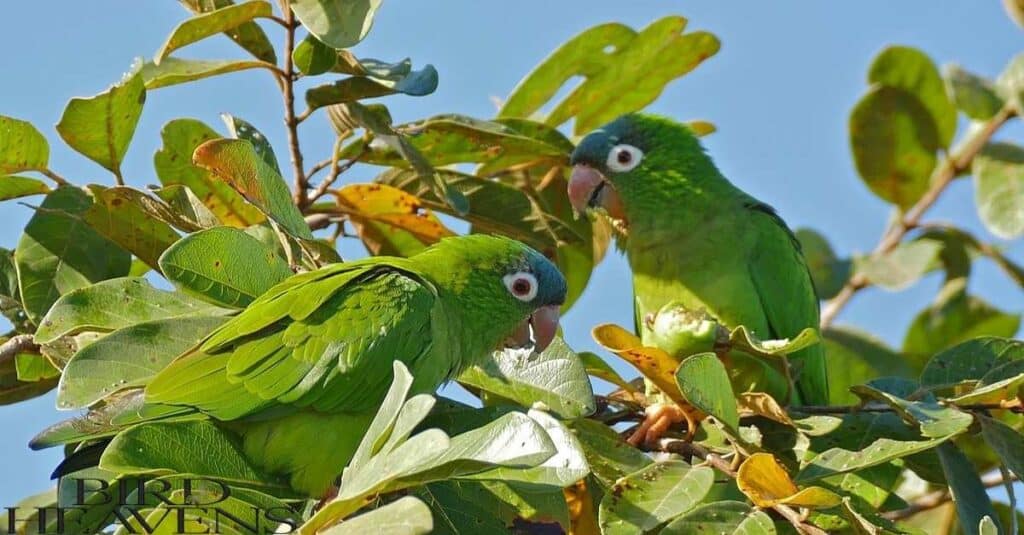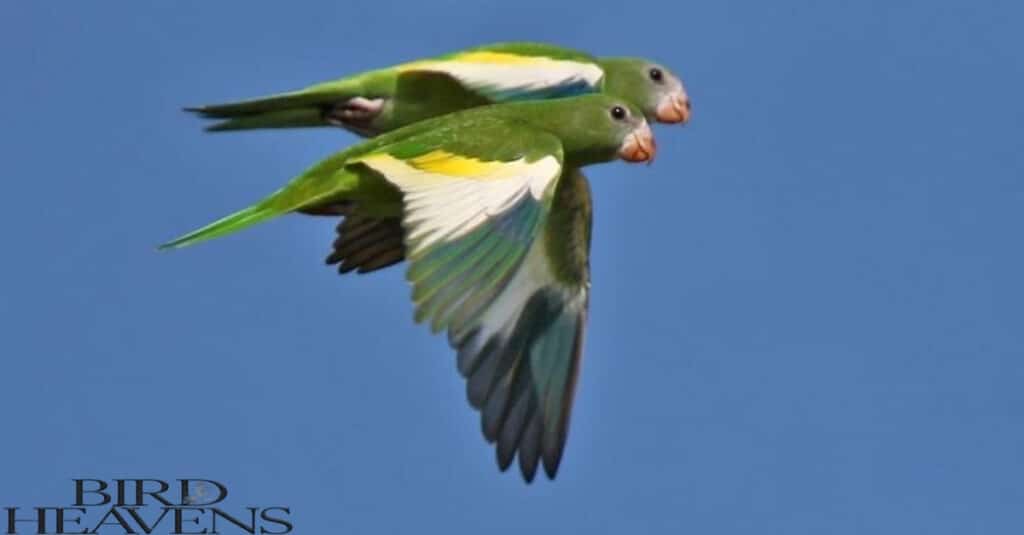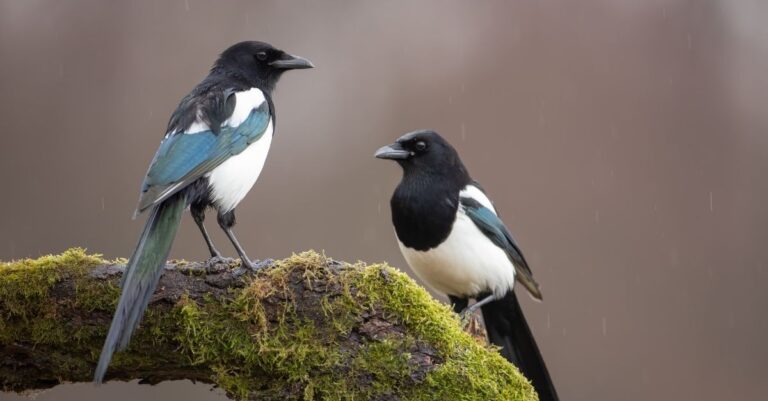Parrots in Florida: Exploring Their Wild Side and Habitats
Parrots in Florida are colorful birds often found in tropical areas. They belong to the family Psittacidae, known for their strong beaks and vibrant feathers. These Florida parrots can mimic sounds and words, making them popular pets.
Have you ever seen a parrot? These amazing creatures can brighten up any day. Imagine a South Florida bird with bright green, blue, or red feathers flying through the sky. They are truly a sight to behold!
In Florida, you can spot various parrot species among the diverse birds of Florida. The most common include the monk parakeet and the yellow-chevroned parakeet. These birds in Florida thrive in warm weather and often live in large, noisy flocks. Many people enjoy watching them in parks and backyards.
Types of Wild Parakeets in Florida
Florida isn’t just a hotspot for snowbirds and spring breakers; it’s a veritable parakeet party! Let’s get to know the feathered friends that call Florida home.
- Blue-crowned Parakeet
- Monk Parakeet
- Nanday Parakeet
- Orange-winged Amazon
- Mitred Parakeet
- Red-masked Parakeet
- Yellow-chevroned Parakeet
- White-winged Parakeet
- Carolina Parakeet
Blue-crowned Parakeet:

Facts:
- Size: About 15 inches long
- Color: Mostly green with a distinctive blue crown
- Nickname: Blue-crowned Conure
- Diet: Fruits, seeds, nuts, and occasionally insects
Where to find them:
Look for Blue-crowned Parakeets in:
- Miami-Dade County (especially around Coconut Grove and Coral Gables)
- Broward County (Fort Lauderdale area)
- Palm Beach County (check out local parks)
Monk Parakeet :

Facts:
- Size: About 11-12 inches long
- Color: Bright green with a grayish chest
- Special Skill: They build huge stick nests
- Interesting Fact: Only parrot species that builds stick nests
Fun Fact: Monk Parakeets are considered agricultural pests in some areas due to their crop-damaging habits, but in Florida, they’ve become a beloved part of the urban landscape.
Where to spot them:
- Tampa Bay area (check out parks in St. Petersburg)
- Miami (look for their large nests on power poles)
- Fort Lauderdale (especially around residential areas)
Nanday Parakeet :

Facts:
- Size: Around 12 inches long
- Color: Green body with a distinctive black head
- Personality: Loud and proud!
- Diet: Seeds, fruits, and leaf buds
Best places to find them:
- St. Petersburg (check out Sawgrass Lake Park)
- Clearwater (especially in residential areas)
- Pinellas County (look for them in local parks)
Orange-winged Amazon :

Facts:
- Size: About 13 inches long
- Lifespan: Up to 50 years in captivity
- Diet: Fruits, nuts, seeds, and flowers
- Distinctive features: Green body with blue and yellow on the head, orange patches on wings
Where to find them in Florida:
Orange-winged Amazons can be found in urban and suburban areas of Miami-Dade County, particularly in the Coral Gables area.
They’re often spotted in parks with large trees, such as Matheson Hammock Park and Fairchild Tropical Botanic Garden.
Mitred Parakeet :

Facts:
- Size: Around 13-15 inches long
- Color: Green with a red forehead and crown
- Fun Fact: They’re excellent mimics!
- Lifespan: Can live up to 20-25 years in the wild
Florida Hotspots:
- Miami Beach (check out South Pointe Park)
- Coral Gables (look around the University of Miami campus)
- Key Biscayne (Crandon Park is a good spot)
Red-masked Parakeet :

Facts:
- Size: About 13 inches long
- Color: Green with a bright red face mask
- Nickname: Cherry-headed Conure
- Interesting Fact: They’re excellent flyers and can reach speeds up to 30 mph
Florida regions to check:
- Miami-Dade County (especially around Coconut Grove)
- Broward County (check out parks in Fort Lauderdale)
- Palm Beach County (look for them in West Palm Beach)
Yellow-chevroned Parakeet :

Facts:
- Size: Around 10 inches long
- Color: Green with yellow wing patches
- Special Trait: They’re great team players
- Diet: Mainly seeds and fruits, occasionally insects
Known locations in Florida:
- Miami area (check out Tropical Park)
- Fort Lauderdale (especially in residential areas)
- Hollywood (look for them in local parks)
White-winged Parakeet :

Facts:
- Size: About 9 inches long
- Lifespan: 15-20 years in captivity
- Diet: Seeds, fruits, and flowers
- Distinctive features: Mostly green with white wing patches visible in flight
Where to find them in Florida:
White-winged Parakeets have established populations in southeast Florida, particularly in Miami-Dade and Broward counties.
They can often be seen in urban parks and residential areas with plenty of trees, such as Hugh Taylor Birch State Park in Fort Lauderdale and Greynolds Park in North Miami Beach.
You Might Like >>Why Don’t I Hear Mourning Doves Anymore?
So Many Non-Native Parrots In Florida?Why
Here are the few reasons which describes why are there so many non-native parrots In florida:
- Pets That Flew Away: Many parrots were brought to Florida as pets. Some of these pets escaped from their homes.
- People Let Their Pet Parrots Go: Some people decided they didn’t want their pet parrots anymore and set them free in Florida.
- Florida’s Weather is Perfect for Parrots: The warm, sunny weather in Florida is a lot like the places where these parrots came from. This makes it easy for them to live here.
- Lots of Food to Eat: Florida has many fruits, seeds, and insects that parrots like to eat. This helps them survive and grow in number.
- Few Natural Enemies: In Florida, these parrots don’t have many animals that hunt them. This helps them live longer and have more babies.
- They’re Good at Adapting: Parrots are smart birds. They learn quickly how to live in new places, even in cities with lots of people.
Case Study:
The Monk Parakeet Invasion In the late 1960s, thousands of Monk Parakeets were imported to the United States as pets. Many escaped or were released, and by the 1970s, they had established breeding populations in several states, including Florida.
Today, they’re one of the most successful parrot species in Florida, with large populations in urban areas across the state.
Are There Any Parrots That Are Native to Florida?
Believe it or not, Florida once had its own native parrot species. There is one native species of parrot that lives in Florida.
Let’s take a quick trip back in time to meet this lost bird and understand why it’s no longer with us.
The Carolina Parakeet:
It is lost native parrot of florida.
Facts:
- Scientific Name: Conuropsis carolinensis
- Last seen in the wild: 1930s
- Declared extinct: 1939
- Size: About 13 inches long
- Color: Green body, yellow head, orange face
The Carolina Parakeet was the only parrot species native to the eastern United States.
It once flew in huge flocks through Florida’s forests and swamps, its vibrant colors flashing in the sunlight as it feasted on seeds and fruits.
Why it went extinct:
- Habitat loss: As settlers moved in, forests were cut down for agriculture and development.
- Hunting: Their colorful feathers were prized for hat decorations.
- Farmer’s Bane: They were considered pests and killed to protect crops.
- Possible Disease: Some scientists believe a poultry disease may have contributed to their decline.
Lessons learned:
The loss of the Carolina Parakeet teaches us how important it is to protect wildlife and their habitats. It’s a stark reminder of the impact human activities can have on species survival.
This extinction event underscores why we need to be careful about how we treat the wild parrots living in Florida today, even if they’re not native.
“The Carolina Parakeet has gone down the long road to extinction, never to return. All that remains are museum specimens and wistful memories.” – Noel F. Snyder, wildlife researcher
How Did These Parrots End Up in Florida?
You might be scratching your head, wondering how all these tropical birds ended up calling Florida home.
Well, it’s quite a tale of accidental introductions and adaptability!
- The Pet Trade Connection: Many of these parrots were originally brought to Florida as pets. Some escaped from their homes or were intentionally released by owners who could no longer care for them. This practice, while well-intentioned, is harmful to both the birds and the environment.
- Accidental Releases: Sometimes, big groups of parrots escaped at once. For example, in the 1960s, a shipment of Monk Parakeets was accidentally released at Miami International Airport when their crates broke open. Talk about a jailbreak!
- Florida’s Welcoming Weather: Once free, these parrots found that Florida’s warm, sunny climate was a lot like their original homes in South and Central America. They could find plenty of food and places to nest, so they decided to stay!
- Adaptability: These parrots have shown remarkable ability to adapt to urban environments. They’ve learned to eat from bird feeders, nest on human made structures, and coexist with humans.
Protecting Florida’s Wild Parakeets:
Even though these parrots aren’t native to Florida, they’re now a part of the local ecosystem. Here’s how we can help keep them safe and healthy while balancing the needs of native species.
Current Conservation Efforts:
- Monitoring Programs: Scientists and bird enthusiasts keep track of parrot populations to understand how they’re doing and how they’re impacting local ecosystems.
- Habitat Protection: Some areas where parrots live are being preserved, benefiting both the parrots and native species.
- Education: Programs teach people about these birds and how to coexist with them responsibly.
- Research: Ongoing studies are looking at the parrots’ behavior, ecology, and impact on native species to inform conservation strategies.
- Humane Population Control: In some areas, efforts are made to control parrot populations through methods like egg addling (preventing eggs from hatching) rather than harmful removal tactics.
What You Can Do to Help:
- Report Sightings: Let local bird groups or use apps like eBird to report when and where you see parrots. This data helps researchers track populations.
- Plant Native Trees: Parrots love fruit trees and palms. By planting native species, you can provide food for parrots while also supporting native wildlife.
- Keep Cats Indoors: Outdoor cats can hurt or kill parrots and other birds. Keeping your feline friends inside helps protect local bird populations.
- Spread the Word: Tell others about these amazing birds and why they’re important. Educate people on the harm of releasing pet parrots into the wild.
- Support Local Wildlife Organizations: Donate to or volunteer with groups that work to protect Florida’s ecosystems and wildlife.
- Avoid Using Pesticides: These chemicals can harm birds and the insects they eat. Try natural pest control methods instead.
- Participate in Community Science: Join local bird counts or monitoring programs to contribute to scientific understanding of these species.
How to Spot Wild Parakeets in Florida?
Ready to go parrot spotting? Here’s what you need to know to see these colorful birds in action!
Best Times for Birdwatching:
- Early Morning: Parrots are most active right after sunrise, usually between 6:00 AM and 9:00 AM.
- Late Afternoon: Many species come out again before sunset, typically from 4:00 PM to 6:00 PM.
- After Rain: Parrots often become active after a rainstorm, coming out to dry off and feed.
- Seasonal Considerations: While parrots are active year-round in Florida, you might see more activity during the breeding season (typically spring and early summer).
Recommended Gear:
- Binoculars (8×42 magnification is ideal for bird watching)
- Bird identification guide or app (like Merlin Bird ID or Audubon Bird Guide)
- Camera (if you want to take pictures)
- Comfortable shoes for walking
- Water and snacks
- Sunscreen and insect repellent
- Notebook for recording your observations
The Impact of Wild Parakeets on Florida’s Ecosystem:
Let’s look at the effects of these feathered Florida residents.
Positive Effects:
- Added Biodiversity: More types of birds mean a more diverse ecosystem. This can lead to increased resilience in the face of environmental changes.
- Tourist Attraction: People come from far and wide to see these colorful parrots, boosting local economies through ecotourism.
- Pest Control: Some parakeets eat insects that can damage plants, providing a natural form of pest control.
- Seed Dispersal: As they eat fruits and berries, parakeets help disperse seeds, potentially aiding in plant reproduction.
- Educational Opportunities: The presence of these birds provides chances for people to learn about ecology, conservation, and animal behavior.

Andrew Paul is a renowned ornithologist and founder of Bird Heavens. With my extensive expertise in bird behavior and habitat preservation,I will insightful content on species identification and conservation.My Future plans include interactive workshops and online courses to foster a global community of bird enthusiasts committed to conservation and appreciating avian life. Join me at Bird Heavens







